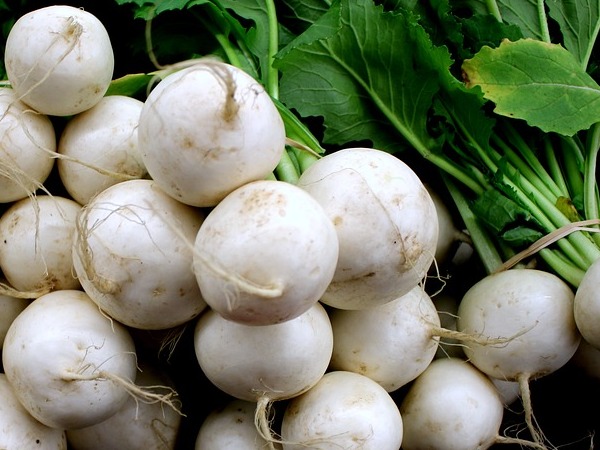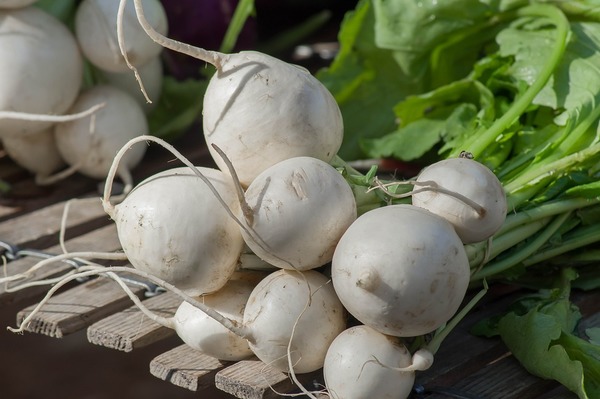Just In
- 2 hrs ago

- 4 hrs ago

- 6 hrs ago

- 17 hrs ago

Don't Miss
- Sports
 PBKS vs MI IPL 2024: Rohit Sharma Set to Become 2nd Player After MS Dhoni to Play 250 IPL Matches
PBKS vs MI IPL 2024: Rohit Sharma Set to Become 2nd Player After MS Dhoni to Play 250 IPL Matches - Movies
 Hairstyles For This Summer: Alia's Braid To Ananya's Sleek Look, Celeb Approved Chic Styles You Must Try
Hairstyles For This Summer: Alia's Braid To Ananya's Sleek Look, Celeb Approved Chic Styles You Must Try - News
 8 Union Ministers, 2 Former CMs, 1 Ex-Governor In Fray In First Phase Of Lok Sabha Election
8 Union Ministers, 2 Former CMs, 1 Ex-Governor In Fray In First Phase Of Lok Sabha Election - Technology
 Redmi Pad Pro 5G Likely to Launch Soon in India; Spotted on Google Play Console Database
Redmi Pad Pro 5G Likely to Launch Soon in India; Spotted on Google Play Console Database - Automobiles
 Upcoming Force Gurkha 5-Door Latest Teaser Confirms Seating Layout & New Features – All Details Here
Upcoming Force Gurkha 5-Door Latest Teaser Confirms Seating Layout & New Features – All Details Here - Education
 ICSI CSEET July 2024 Registration; Exam date is out, Know more
ICSI CSEET July 2024 Registration; Exam date is out, Know more - Finance
 Just Dial Hits 52-Week High With 13% Surge On Q4 Results Growth
Just Dial Hits 52-Week High With 13% Surge On Q4 Results Growth - Travel
 From Coconut Breaking on Head to Men Dressing as Women: 12 Unique Indian Rituals Explored
From Coconut Breaking on Head to Men Dressing as Women: 12 Unique Indian Rituals Explored
10 Health Benefits Of Turnips, Nutrition, Recipes And Caution
Scientifically termed as Brassica rapa, turnips are round, apple-sized root vegetable belonging to the Brassicaceae family. Widely known as a root vegetable, turnips play an important role in maintaining health. Being a cruciferous vegetable, they are widely available all year around. Turnips have excellent medicinal properties that are still unknown to many. Turnips can be consumed raw and cooked. Generally, the roots are eaten but even the leaves are also nutritious and edible.

The root vegetable is known to benefit your health in several ways. Its amazing health benefits include prevention of heart attack and other heart diseases and anticancer properties among many others. It is very good for your immune system, eyesight, bone health and skin. It also help reduce your high cholesterol levels and prevent the onset of osteoporosis, rheumatoid arthritis and cataracts [1] .
Low in calories, this vegetable makes you feel full and also helps regulate your metabolism well. Regular intake of turnips is good for your vision and also provides many essential vitamins and minerals to your body [2] . Read on to know more about turnips and the ways you can incorporate it in your daily diet.
Nutritional Value Of Turnips
100 grams of the vegetable contains 20 calories of energy, 0.5 g sugar, 0.2 g fat, 0.045 mg thiamine, 0.072 mg riboflavin, 0.411 mg niacin, 0.274 mg pantothenic acid, 0.18 mg vitamin B6, 0.8 mg iron and 0.337 mg manganese.
The remaining nutrients present in turnips are as follows [3] :
- 4.4 g carbohydrates
- 1.1 g protein
- 93.2 g water
- 8440 mcg lutein
- 381 mcg vitamin A equiv.
- 4575 mcg beta-carotene
- 118 mcg folate
- 27.4 mg vitamin C
- 1.88 mg vitamin E
- 368 mcg vitamin K

Health Benefits Of Turnips
Low in calories, this vegetable makes you feel full and also helps regulate your metabolism well. Regular intake of turnips is good for your vision and also provides many essential vitamins and minerals to your body [4] , [5] , [6] [7] , [8] .
1. Improve heart health
The high levels of fibre and potassium in the vegetable makes it highly nutritious and beneficial for maintaining a healthy heart. Turnips, when digested absorb more amount of bile which in turn, uses cholesterol present in your body and aids digestion. Hence the cholesterol content in the body is highly reduced. The large amount of Vitamin K present in turnips helps in anti-inflammatory process. Hence heart stroke, heart attack, and other heart ailments are prevented. They also have an excellent level of folate which helps to boost up the cardiovascular system.
2. Prevent cancer
The presence of glucosinolates helps to prevent cancer and reduce the effect of the same. They are natural plant chemicals and break into two compounds while digesting i.e., indoles and isothiocyanates. These two act as a strong agent in breaking down the tumour cells and help in reducing the cancerous growth. Studies have also proved that people who include turnips in their daily diet have less risk of cancer, especially breast cancer. It also has a greater effect on colon and rectal tumours.

3. Enhance bone health
Turnips have a healthy supply of calcium and potassium. This helps in reducing the risk of osteoporosis, rheumatoid arthritis, joint damage and other bone ailments. The presence of copper strengthens the connective tissues further making your bones healthy.
4. Promote digestion
As the vegetable is very rich in fibre content, it promotes healthy digestion while preserving your intestine and colon. Turnips can prevent constipation, bloating, indigestion and diarrhoea, thereby making it extremely beneficial for your digestive health.
5. Regulate blood pressure
Potassium and dietary nitrates in turnips can help in controlling blood pressure. Also, the potassium can help in eliminating excess sodium. The rich content of potassium in turnips make it beneficial for this purpose and it also help dilate the arteries and reduces the risk of stroke and heart attack.
6. Aids weight loss
If you are trying to lose weight then turnips are very good for you. It is low in calories which makes it a good addition to a weight loss program. It also regulates your metabolism due to its high fibre content. So, have turnips and lose that extra fat without posing any risks to your health.
7. Prevents body odour
Turnip juice is extremely effective in getting rid of body odour. Drinking turnip juice regularly is said to remove your body odour. You can smear a spoon of juice under the arm pits. You can also smear it on cracked feet.

8. Improves eyesight
You can include turnips in your daily diet in several ways. You can use it in soup or salad to gain its benefits. It is very good for eyes also as it is very rich in lutein, a carotenoid which helps promote your eye health and prevents cataracts and macular degeneration [9] .
9. Cures asthma
If you are an asthma patient, make turnips a part of your daily diet. This cruciferous vegetable has great anti-inflammatory and antioxidant properties which help cure asthma. Turnips are very effective for asthma treatment if taken regularly [10] .
10. Strengthens immune system
Turnips are beneficial for the proper functioning of your immune system. Beta-carotene present in turnips aids the body to produce healthy membranes. Also, the potassium present in it assists in proper functioning of muscle and nerves.
How To Select Turnips
Chose ones that are smaller in size, with a heavy skin and lush, green leaves. Do not buy it if it has brown or dark spots. You can store it the refrigerator a week and not more than that as the vegetable will lose all its nutrients by then [11] .
Healthy Turnip Recipes
1. Turnip and zucchini soup
Ingredients [12]
- ½ cup water
- 2 tbsp onions, chopped fine
- 1 tbsp garlic, chopped
- 1 cup turnip, chopped
- 1 cup zucchini or use can also use bottle gourd
- 3 cups vegetable stock
- A handful of chopped spinach
- ½ tbsp ginger, chopped fine
- ½ lemon, juice
- A pinch of salt

Directions
- Add ¼ cup of water into a pan and boil.
- Add the onions and garlic.
- Let them sauté in the water for a few minutes.
- Add the turnip and cover the lid, and let it cook for about 5 minutes.
- Now add some vegetable stock, spinach and little more stock to adjust the consistency.
- Add the ginger, lemon juice and salt.
- When the veggies are cooked enough purée some of it in a blender.
- Add the purée back to the pan of veggies.
- Heat it and serve.
2. Turnip salad
Ingredients
- 3 turnip
- ½ apple
- ½ tablespoon lemon juice
- 1 carrot
- ½ tablespoon onion
- 1 tbsp olive oil
- ½ tbsp apple cider, parsley and black pepper
Directions
- Trim the ends of turnips, peel them and grate them in a large bowl.
- Peel and grate apple and carrots and combine with the turnips.
- Pour lemon juice and toss the bowl to mix.
- Chop onion and add it in the bowl along with oil, apple cider, parsley and sugar.
- Toss again.
- Season well with salt and black pepper.
- Place the bowl in refrigerator for some time.
Side Effects Of Turnips
- Some compounds in the vegetable can negatively affect the thyroid gland and thyroid production [13] .
- If you are on nitrate drugs, do not consume turnips as the vegetable contains high levels of nitrate.
- It may have allergic reactions on some individuals.
- Eating large quantities of turnips can cause flatulence in some people.
- [1] Howell, S. H., Walker, L. L., & Dudley, R. K. (1980). Cloned cauliflower mosaic virus DNA infects turnips (Brassica rapa).Science,208(4449), 1265-1267.
- [2] Kahlon, T. S., Chapman, M. H., & Smith, G. E. (2007). In vitro binding of bile acids by okra, beets, asparagus, eggplant, turnips, green beans, carrots, and cauliflower.Food chemistry,103(2), 676-680.
- [3] Westwood, C. T., & Mulcock, H. (2012). Nutritional evaluation of five species of forage brassica. InProceedings of the New Zealand Grassland Association(Vol. 74, pp. 31-38). New Zealand Grassland Association.
- [4] Slavin, J. L., & Lloyd, B. (2012). Health benefits of fruits and vegetables.Advances in nutrition,3(4), 506-516.
- [5] Butt, M. S., Sultan, M. T., & Lobo, M. G. (2018). Selected Other Vegetables: Okra, Eggplant, Turnip, Asian Radish, Bitter Gourd, and Kohlrabi.Handbook of Vegetables and Vegetable Processing, 863-887.
- [6] Paul, S., Geng, C. A., Yang, T. H., Yang, Y. P., & Chen, J. J. (2019). Phytochemical and Health‐Beneficial Progress of Turnip (Brassica rapa).Journal of food science,84(1), 19-30.
- [7] Gharehbeglou, P., & Jafari, S. M. (2018). Antioxidant components of Brassica vegetables including turnip and the influence of processing and storage on their anti-oxidative properties.Current medicinal chemistry.
- [8] Saleh, A. M., Selim, S., Al Jaouni, S., & AbdElgawad, H. (2018). CO2 enrichment can enhance the nutritional and health benefits of parsley (Petroselinum crispum L.) and dill (Anethum graveolens L.).Food chemistry,269, 519-526.
- [9] Ramya, V., & Patel, P. (2019). Health benefits of vegetables.IJCS,7(2), 82-87.
- [10] Vieites-Outes, C., López-Hernández, J., & Lage-Yusty, M. A. (2016). Modification of glucosinolates in turnip greens (Brassica rapa subsp. rapa L.) subjected to culinary heat processes.CyTA-Journal of Food,14(4), 536-540.
- [11] Fard, M. H., Naseh, G., Lotfi, N., Hosseini, S. M., & Hosseini, M. (2015). Effects of aqueous extract of turnip leaf (Brassica rapa) in alloxan-induced diabetic rats.Avicenna journal of phytomedicine,5(2), 148.
- [12] NDTV Food. (2019, January 24). 5 Best Turnip Recipes | Popular Shalgam Recipes [Blog post]. Retrieved from https://food.ndtv.com/lists/5-best-turnip-shalgam-recipes-1635484
- [13] Darwish, M. M., Osman, N. N., Mfs, F., & Yonies, B. M. (2016). Turnip (Brassica Rapa L.) Attenuate Liver and Kidney Damage Induced by Gamma Irradiation in Rats.BAOJ Pharm. Sci,2, 28-33.
-
 nutrition10 Healthiest White Vegetables To Include In Your Diet
nutrition10 Healthiest White Vegetables To Include In Your Diet -
 healthAmul’s New Protein Product For Gym-Goers And Vegetarians: Know More About ‘Super Milk’
healthAmul’s New Protein Product For Gym-Goers And Vegetarians: Know More About ‘Super Milk’ -
 wellnessHeadache After Drinking Red Wine? This May Be The Reason!
wellnessHeadache After Drinking Red Wine? This May Be The Reason! -
 healthRelieve Day-to-Day Stress Like Shilpa Shetty With A Tennis Ball!
healthRelieve Day-to-Day Stress Like Shilpa Shetty With A Tennis Ball! -
 healthGet Your Groove On: 5 Health Benefits Of Dancing To Afro Beats
healthGet Your Groove On: 5 Health Benefits Of Dancing To Afro Beats -
 wellnessMilind Soman Birthday: The 'Made In India' Actor's Lunch Is The Best Way To Add Veggies To Your Diet
wellnessMilind Soman Birthday: The 'Made In India' Actor's Lunch Is The Best Way To Add Veggies To Your Diet -
 healthWorld Sandwich Day: 4 Indian-born Sandwiches You Must Try!
healthWorld Sandwich Day: 4 Indian-born Sandwiches You Must Try! -
 healthDurga Puja Special: Why You Should Eat Hilsa Fish (Macher Raja) At least Once A Week
healthDurga Puja Special: Why You Should Eat Hilsa Fish (Macher Raja) At least Once A Week -
 health5 Natural Viagra Alternatives For Women
health5 Natural Viagra Alternatives For Women -
 healthChew These 4 Foods For A Defined Jawline
healthChew These 4 Foods For A Defined Jawline -
 wellnessInternational Gin And Tonic Day 2023: Interesting Benefits Of Gin That Will Definitely Surprise You!
wellnessInternational Gin And Tonic Day 2023: Interesting Benefits Of Gin That Will Definitely Surprise You! -
 healthBoost Your Health with Beetroot: Health Benefits And Ways To Add The Colourful Veggie In Your Diet
healthBoost Your Health with Beetroot: Health Benefits And Ways To Add The Colourful Veggie In Your Diet


 Click it and Unblock the Notifications
Click it and Unblock the Notifications



